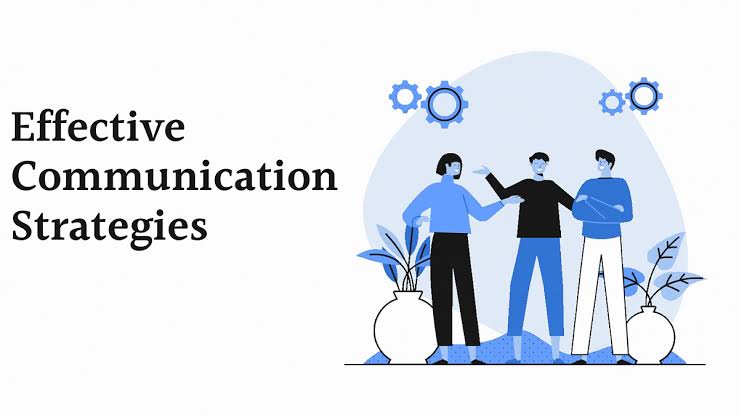Effective communication is more than just exchanging words—it is the basis of good relationships, productive work, and strong leadership. By July 2025, communication has become more complex due to digital interaction, remote work, and working with different cultures. Good communication means knowing what to say, how to say it, when to say it, and why. It needs clear intention, understanding, and flexibility. In today’s fast world, good communication skills help avoid confusion, resolve conflicts, and build teamwork.
Understanding the Fundamentals of Communication
The first step toward effective communication is understanding its basic elements: the sender, the message, the medium, the receiver, and the feedback loop. When any one of these components is weak, the message can be distorted or misinterpreted.
Clear communication begins with knowing your objective and shaping your message to fit the context. A message that is too vague, technical, or emotionally charged may lead to confusion or defensiveness. It’s also essential to consider your audience—what they value, how they process information, and what assumptions they might bring to the conversation.
Equally important is the feedback loop. Communication is not a one-way activity; it’s a dynamic exchange. Effective communicators actively listen, seek clarification, and respond to feedback in ways that ensure mutual understanding. This back-and-forth process fosters connection and trust, which are vital in both personal and professional interactions.
The Power of Active Listening
One of the most overlooked aspects of communication is listening. While many people assume that effective communication is about how well you speak, the ability to listen—genuinely and attentively—is just as, if not more, important.
Active listening involves giving full attention to the speaker, making eye contact, avoiding interruptions, and responding thoughtfully. It also means reading between the lines—recognizing tone, body language, and emotional cues.
In 2025, as digital communication continues to dominate, the need for active listening has only intensified. In virtual meetings, messages can easily be misread or lost without visual cues. Therefore, strong communicators ask clarifying questions, summarize what they’ve heard, and check for mutual understanding.
By listening with empathy and intent, you not only reduce misunderstandings but also make others feel seen and valued—an essential step in building rapport and effective collaboration.
Mastering Verbal and Nonverbal Expression
What you say and how you say it are equally influential in communication. Verbal communication should be clear, concise, and purpose-driven. Using simple language, avoiding jargon, and organizing your thoughts logically help ensure that your message is easily understood.
However, nonverbal cues often carry even more weight. Body language, facial expressions, posture, and gestures all convey information, sometimes even more honestly than words. For instance, crossed arms may signal defensiveness, while leaning forward shows engagement and interest.
Tone of voice also plays a crucial role. The same words can be interpreted differently depending on whether they’re delivered with enthusiasm, sarcasm, or indifference. Effective communicators are mindful of their tone, adjusting it to match their message and audience.
In multicultural and multilingual settings, nonverbal communication becomes especially important. Being aware of cultural norms and sensitivities ensures that your gestures or tone are not misinterpreted or offensive.
The Importance of Emotional Intelligence
Emotionally intelligent individuals are naturally better communicators. Emotional intelligence allows you to recognize your own emotions, understand others’ feelings, and respond appropriately in a way that builds connection and trust.
When you communicate with emotional intelligence, you’re more likely to choose your words carefully, listen without judgment, and navigate conflicts with empathy. You’re also better equipped to read the room, sense tension, and adapt your communication strategy accordingly.
As workplaces become more emotionally aware in 2025, emotional intelligence training is being incorporated into leadership development programs, HR initiatives, and even school curricula. Effective communication is no longer just a soft skill—it is a key element of emotional maturity and professional competence.
Adapting Communication to Different Platforms
In our modern age, communication occurs across various channels—emails, instant messaging, video conferencing, voice notes, and face-to-face interactions. Each platform requires its own tone, etiquette, and strategy.
Emails should be structured, polite, and to the point. Instant messaging can be more casual but still professional. Video calls benefit from visual engagement and real-time feedback. Understanding these differences allows you to tailor your message for the most effective delivery.
Moreover, digital communication often lacks the emotional nuance of face-to-face interaction, which means you have to compensate with clarity and intentionality. Using emojis, for example, can sometimes help convey tone, but they must be used thoughtfully in professional contexts.
Effective communicators in 2025 are those who can shift seamlessly between communication platforms, adapting their language and approach to match the expectations and needs of the medium and the audience.
Navigating Conflict and Difficult Conversations
No matter how skilled you are at communication, conflict is inevitable. However, emotionally intelligent and communicative individuals know how to handle disagreements constructively.
The key is to stay calm, avoid blame, and focus on the issue rather than personal attacks. Using “I” statements instead of “you” accusations helps reduce defensiveness. For example, saying “I feel overwhelmed when deadlines aren’t met” is more productive than “You never meet deadlines.”
Effective communicators also validate the other person’s feelings, even if they disagree. This does not mean agreeing, but rather acknowledging the other person’s perspective. It fosters a sense of respect and openness that can lead to compromise or resolution.
With ongoing conversations about inclusion and respect in 2025, organizations are placing greater emphasis on training people in conflict resolution and compassionate communication—vital tools for team cohesion and growth.
Continuous Improvement and Self-Reflection
Mastering the art of communication is a lifelong journey. Even seasoned communicators make mistakes or misread situations. What sets them apart is their willingness to reflect, learn, and adapt.
After important interactions, consider what went well and what could have been improved. Did you listen attentively? Was your message clearly understood? Did your body language align with your words?
As technology evolves and cultural expectations shift, staying updated on communication trends and strategies is essential. Many professionals in 2025 are investing in communication coaching, workshops, and self-paced online courses to enhance their interpersonal skills.
Conclusion: The Value of Communication in a Connected World
In 2025, effective communication is not just about language—it’s about connection. It is the bridge between people, ideas, and progress. By mastering the principles of clarity, empathy, adaptability, and emotional intelligence, you not only express yourself more powerfully but also understand others more deeply.
Whether you’re building a career, strengthening a relationship, or leading a team, communication is your most essential tool. The more you refine this skill, the more influential and impactful you become—not just in what you say, but in how you make others feel, respond, and grow alongside you.



